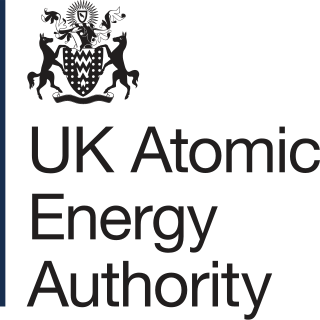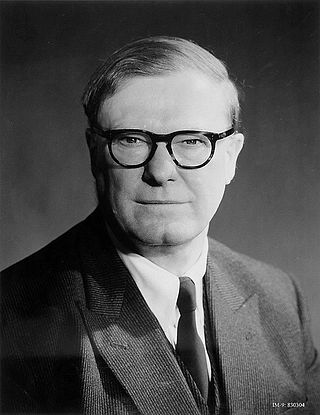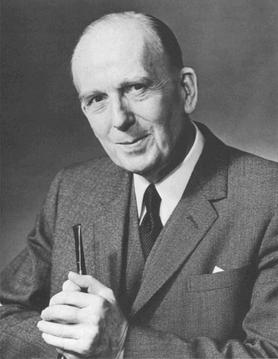
The Atomic Energy Research Establishment (AERE) was the main centre for atomic energy research and development in the United Kingdom from 1946 to the 1990s. It was created, owned and funded by the British Government.

The Atomic Weapons Establishment (AWE) is a United Kingdom Ministry of Defence research facility responsible for the design, manufacture and support of warheads for the UK's nuclear weapons. It is the successor to the Atomic Weapons Research Establishment (AWRE) with its main site on the former RAF Aldermaston and has major facilities at Burghfield, Blacknest and RNAD Coulport.

The United Kingdom Atomic Energy Authority is a UK government research organisation responsible for the development of fusion energy. It is an executive non-departmental public body of the Department for Energy Security and Net Zero (DESNZ).

Dounreay is a small settlement and the site of two large nuclear establishments on the north coast of Caithness in the Highland area of Scotland. It is on the A836 road nine miles west of Thurso.

The United Kingdom Atomic Energy Authority Constabulary was the armed security police force of the United Kingdom Atomic Energy Authority. The force existed for 50 years, operating from 1955, until 1 April 2005.

William George Penney, Baron Penney, was an English mathematician and professor of mathematical physics at the Imperial College London and later the rector of Imperial College London. He had a leading role in the development of High Explosive Research, Britain's clandestine nuclear programme that started in 1942 during the Second World War which produced the first British atomic bomb in 1952.

The Ministry of Supply (MoS) was a department of the UK government formed on 1 August 1939 by the Ministry of Supply Act 1939 to co-ordinate the supply of equipment to all three British armed forces, headed by the Minister of Supply. A separate ministry, however, was responsible for aircraft production, and the Admiralty retained responsibilities for supplying the Royal Navy. During the war years the MoS was based at Shell Mex House in The Strand, London.
Nuclear power in the United Kingdom generated 16.1% of the country's electricity in 2020. As of August 2022, the UK has 9 operational nuclear reactors at five locations, producing 5.9 GWe. It also has nuclear reprocessing plants at Sellafield and the Tails Management Facility (TMF) operated by Urenco in Capenhurst.

Lorna Margaret Arnold was a British historian who wrote several books connected with the British nuclear weapons programmes.

Sir William Richard Joseph Cook, was a British civil servant and mathematician.
Spherical Tokamak for Energy Production (STEP) is a spherical tokamak fusion plant concept proposed by the United Kingdom Atomic Energy Authority (UKAEA) and funded by the UK government. The project is a proposed DEMO-class successor device to the ITER tokamak proof-of-concept of a fusion plant, the most advanced tokamak fusion reactor to date, which is scheduled to achieve a 'burning plasma' in 2035. STEP aims to produce net electricity from fusion on a timescale of 2040. Jacob Rees-Mogg, the UK Secretary of State for Business, Energy and Industrial Strategy, announced West Burton A power station in Nottinghamshire as its site on 3 October 2022 during the Conservative Party Conference. A coal-fired power station at the site ceased production a few days earlier. The reactor is planned to have a 100 MW electrical output and be tritium self-sufficient via fuel breeding.

The Atomic Energy Authority Act 1954 is an act of the Parliament of the United Kingdom which established the United Kingdom Atomic Energy Authority with powers to produce, use and dispose of atomic energy and to carry out research into this and related matters.

The Atomic Energy Authority Act 1959 is an Act of the Parliament of the United Kingdom which amended and extended the constitution and powers of the United Kingdom Atomic Energy Authority.
The National Institute for Research in Nuclear Science was a UK Government establishment that provided equipment and facilities for nuclear research that would otherwise be beyond the financial capability of individual universities and other nuclear research establishments. It operated from 1957 to 1965.

The Atomic Energy Authority Act 1971 is an Act of Parliament of the United Kingdom. The principal effect of the Act was to transfer certain functions, property and responsibilities of the United Kingdom Atomic Energy Authority to two newly established organisations, namely the British Nuclear Fuels Limited and The Radiochemical Centre Limited.

The Atomic Energy Authority Act 1973 is an Act of Parliament of the United Kingdom. The effect of the Act was to transfer the functions, property, liabilities and responsibilities related to atomic weapons from the Weapons Group of the United Kingdom Atomic Energy Authority to Ministry of Defence.

The Atomic Energy Authority Act 1976 is an Act of Parliament of the United Kingdom. The effect of the Act was to extend and amend the powers of special constables carrying firearms and the places that they may exercise their powers.

The Atomic Energy Act 1981 is an Act of Parliament of the United Kingdom. The effect of the act was to allow the United Kingdom Atomic Energy Authority, and the secretary of state for energy, to sell, or otherwise dispose of, shares in relevant companies held by them.

The Nuclear Industry (Finance) Act 1977 is an Act of Parliament of the United Kingdom. Its effect was to amend the financial provision for three of the United Kingdom's nuclear organisations.

The Nuclear Safeguards Act 2000 is an Act of Parliament of the United Kingdom. Its effect was to enact in the UK the provisions of the 1998 Treaty on the Non-Proliferation of Nuclear Weapons.










